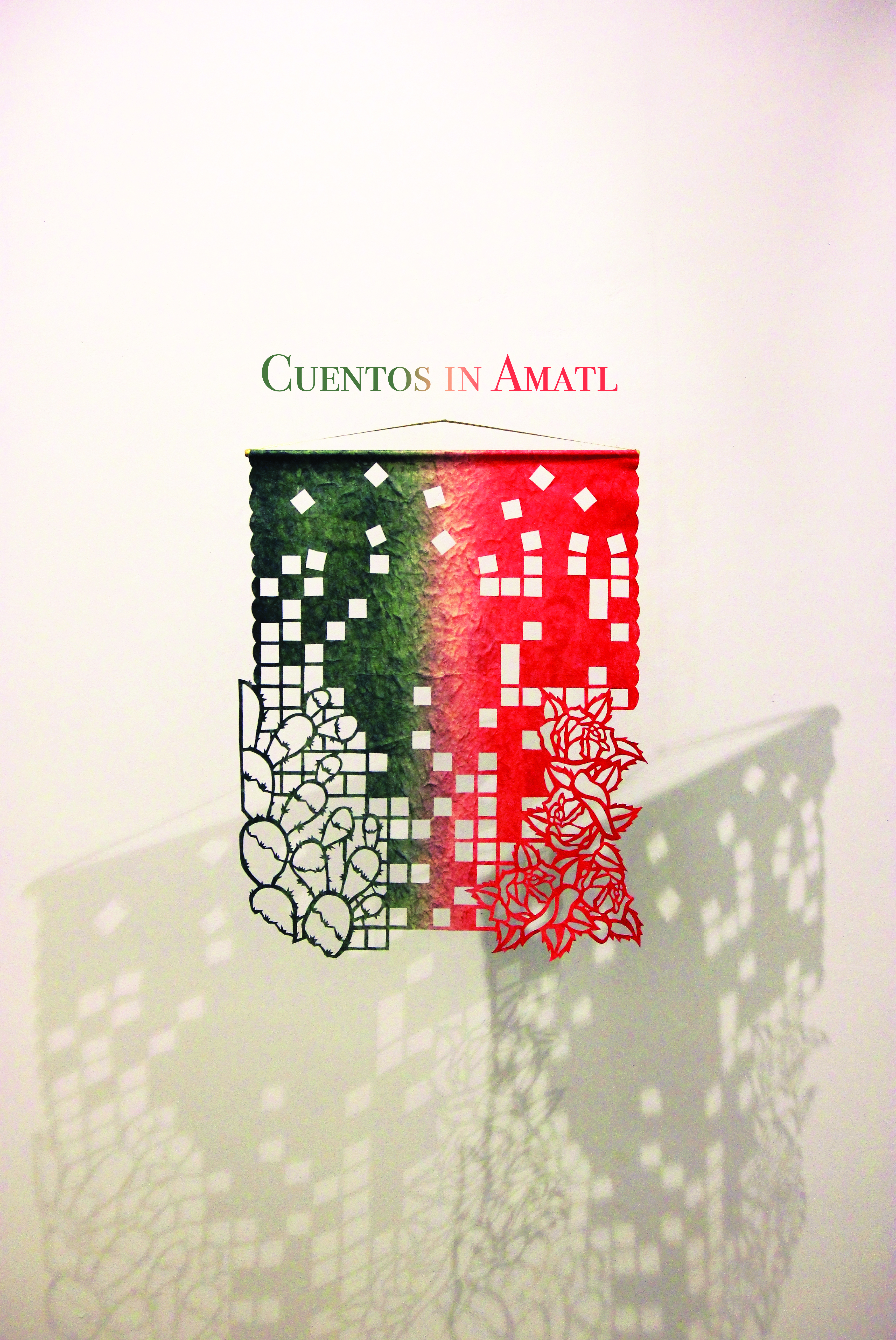By Sarina Galindo
On Feb. 7, students, staff and visitors came together and viewed the art on display in Napa Hall. “Cuentos in Amatl” curated by Celia Herrera Rodriguez and held in Napa Hall from Jan. 28 Feb. 21, focused on the ways of experiencing art in non-western Indigenous traditions and customs. All types of art, from the CI Palm Temporary Wall that focused on inspirations, to the CI Grad Wall 1 that focused on the quality of video and the CI Grad Wall 2 that focused on fruits, vegetables and post-traumatic stress disorder (PTSD) were displayed. All the artwork hung, stood or played all around for onlookers to see the meaning, story and overall hard work and creativity that was put into the work.
Celia Herrera Rodriguez’s showcase of art displayed individuals’ story, practice, thought and culture and showed to some modern takes. Their art varied from amate paper that had double takes from the picture on the paper, to the hole’s shadow that created another image, to digital images on canvases to express the culture with a modern twist. There were also boxes or drawings that told a story a culture of traditions, music and art.
CI Palm Temporary was dedicated to “Santa Rosa Island: Inspirations” and the beauty and creative inspiration within the natural and remote setting that they were placed in. The art varied from sketches to videos to photos of the beautiful and captivating scenery they saw while at Cis Santa Rosa Island Research Station. The art hung in a 5×5 inch panel that showed what they saw.
The CI Grad Wall 1 was dedicated to Angel Quinteros’ work, “Quality Video.” This 17 minute video played on a loop throughout the night.
Finally, the CI Grad Wall 2 had a mix of two ideas. On one side, Dominique Burgos, an art major, had her photos of fruit and vegetables displayed to show off the patterns and designs, in addition to the color that shined in the most minimalistic way. Each of her frames consists of two complimentary images that were put together to create a subtle illusionistic feeling for the viewers. On the other side, Connar L’Ecuyer’s “The PTSD Project” showed a more serious note of PTSD from the effects of certain jobs.
L’Ecuyer stated he wanted his art to be life size to reflect the realism of the job and capture the struggles that people face even if they look fine. Each of his photos dealt with a certain problem people face as well as a number that anyone in that job field could call if they are struggling. L’Ecuyer displayed life sized images of veterans, emergency medical technicians (EMTs) and firefighters. The Veterans photo was showing the traumatic stress of war. The EMT images dealt with the guilt of not being able to save a life. The images of firefighters were about being afraid but gearing up to do whatever they can to help in spite of the fear.

